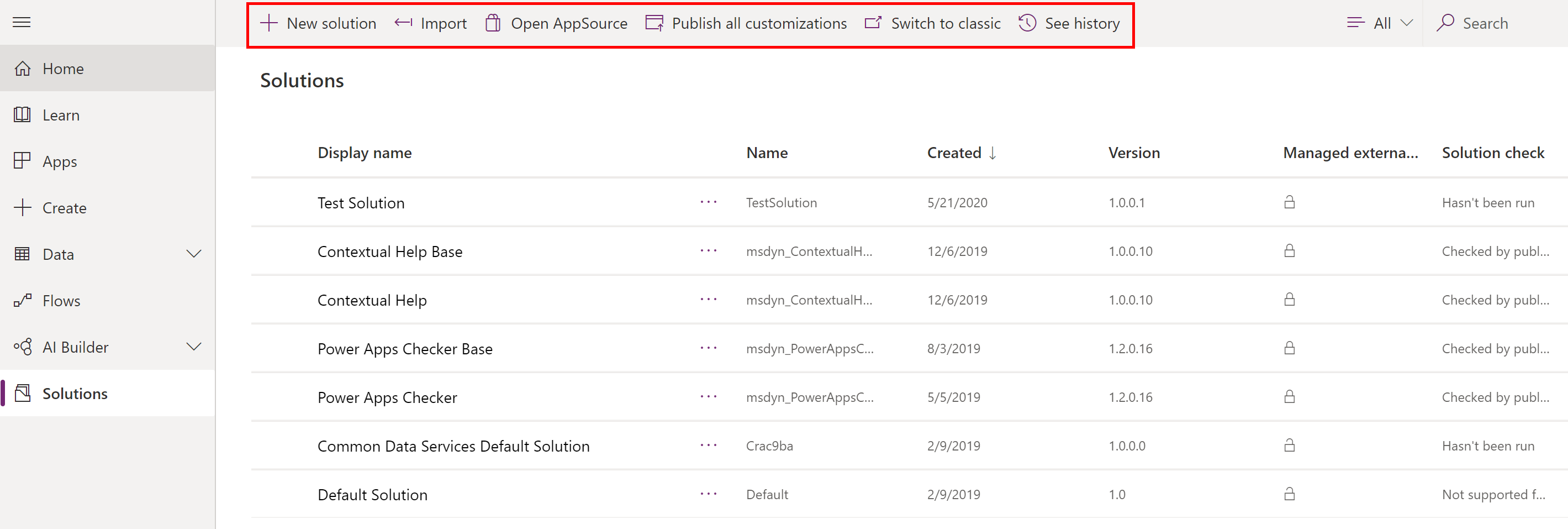Solutions in Power Apps overview
Solutions are used to transport apps and components from one environment to another or to apply a set of customizations to existing apps. A solution can contain one or more apps as well as other components such as site maps, tables, processes, web resources, choices, flows, and more.
Solutions are the mechanism for implementing application lifecycle management (ALM) in Power Apps and other Power Platform products, such as Power Automate.
Note
To learn more about the solution concepts and how solutions are used for application lifecycle management, go to Overview of ALM with Microsoft Power Platform in the Power Platform ALM guide.
This section focuses on the manual tasks that app makers need to perform while working with solutions in Power Apps.
Get started: solution concepts
Before you work with solutions, it's important that you get acquainted with the following solution concepts:
- Two types of solutions (managed and unmanaged)
- Solution components
- Lifecycle of a solution (create, update, upgrade, and patch a solution)
- Solution publisher
- Solution and solution component dependencies
To learn more, go to Solution concepts in the Power Platform ALM guide.
Default solutions
Power Apps provides you with the following default unmanaged solutions:
- Common Data Service Default Solution. This solution is available for makers to use by default for their customizations in an environment. The Common Data Service Default Solution is useful when you want to evaluate or learn Power Apps. However, we recommend that app makers work in their own unmanaged solutions.
- Default Solution. This is a special solution that contains all components in the system. The default solution is useful for discovering all the components and configurations in your system.
However, we recommend that you create a solution to manage your customizations. More information: Use a solution to customize in the Power Platform ALM guide.
Managed properties
You can control which of your managed solution components are customizable by using managed properties. We recommend that you set managed properties so that your managed components can’t be modified. This helps protect your solution from modifications that might cause it to break after it's imported into another environment, such as test or production.
More information: Managed properties in the Power Platform
Work with solutions in Power Apps
Within Power Apps, you can view a list of solutions by selecting Solutions in the left navigation. You can perform these solution tasks:
- New solution: To locate and work with just the components you’ve customized, create a solution and do all your customization there. Then, you can easily distribute your solution to other environments. More information: Create a solution
- Import: Import a solution into your environment. More information: Import solutions
- Open AppSource: Microsoft AppSource is where you can go to get solutions tailored to your industry that work with the products you already use.
- Publish all customizations: Publish all active customizations in your environment.
- Set preferred solution: Set your preferred solution where all solution components are created in.
- Switch to classic: Open the classic solution explorer.
- See history: View details about solution operations over time, such as import, export, and uninstall. More information: View the history of a solution
- Solution checker: Run or review results of solution checker for this solution.
- Show dependencies: View solution dependencies for solutions that would block uninstall of this solution.
- Apply Upgrade: Apply a pending upgrade that has been initiated for a managed solution.
Tasks available with no solution selected include: New solution, Import solution, Open AppSource, Publish all customizations, Set preferred solution.
Tasks available with a solution selected include: New solution, Edit, Delete, Export solution, Solution checker, Show dependencies, Set preferred solution, See history, Clone, Apply Upgrade (when upgrade is available).
From the Solutions area, select a solution to view all of its objects.
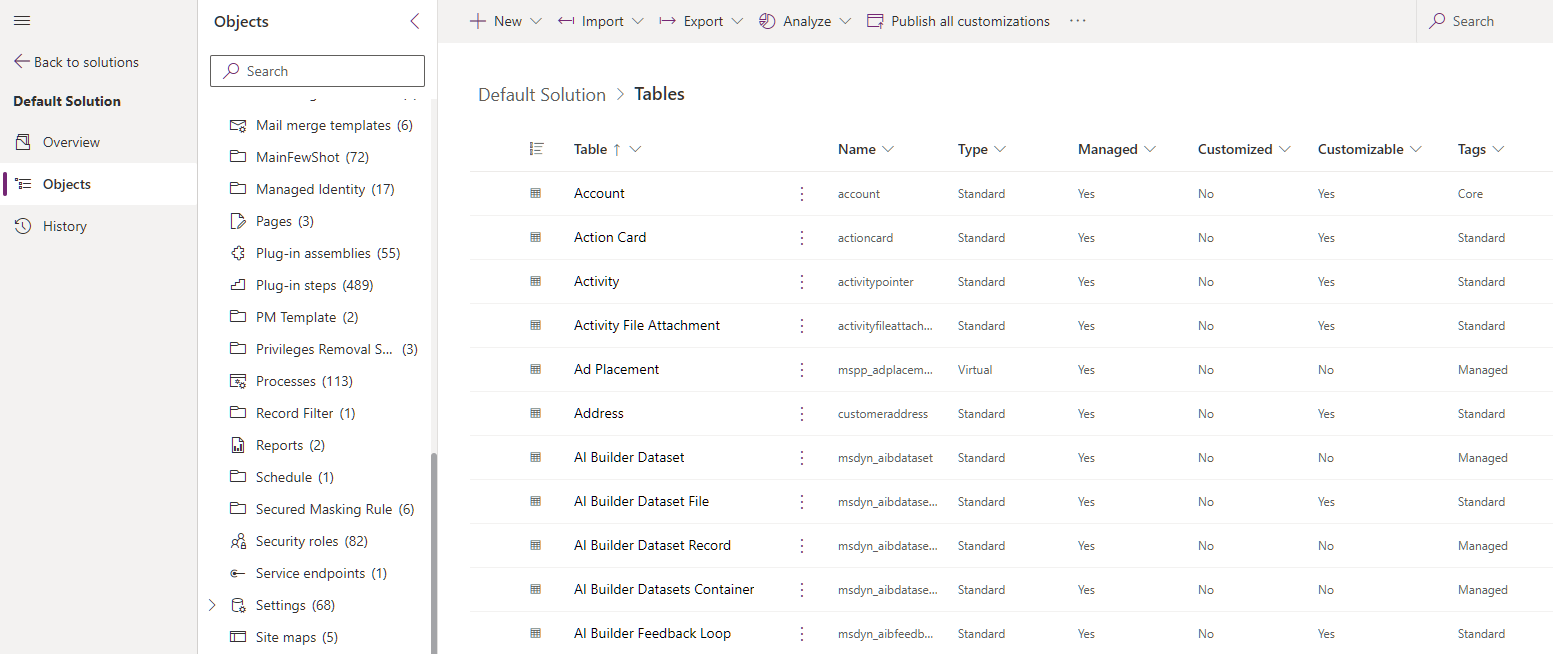
Browse through all the objects in a solution by scrolling through the items. If there are more than 100 items in the list, you can select Load the next 100 items to see more.
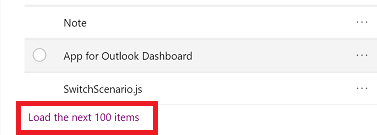
Columns can be sorted and filtered by selecting the column header.
Column headers include:
- Managed: The solution object is from a managed solution. You can inspect the object by selecting the item and then select Advanced > See solution layers.
- Customizable: The component is available to be customized.
- Customized: This indicates that the object is an unmanaged object, or a managed object with an unmanaged customization layer. You can use this column to quickly locate the unmanaged changes you have for components in the solution.
- Owner: If the solution object supports user and team ownership, the current owner is displayed.
- Status: If the solution object supports state management (on/off, enabled/disabled, active/inactive), the status is displayed.
Tip
You can quickly locate all solution objects that are unmanaged or have unmanaged customizations by selecting the default solution and filtering on the Customized column.
Search and filter in a solution
Search for a specific component by its name.
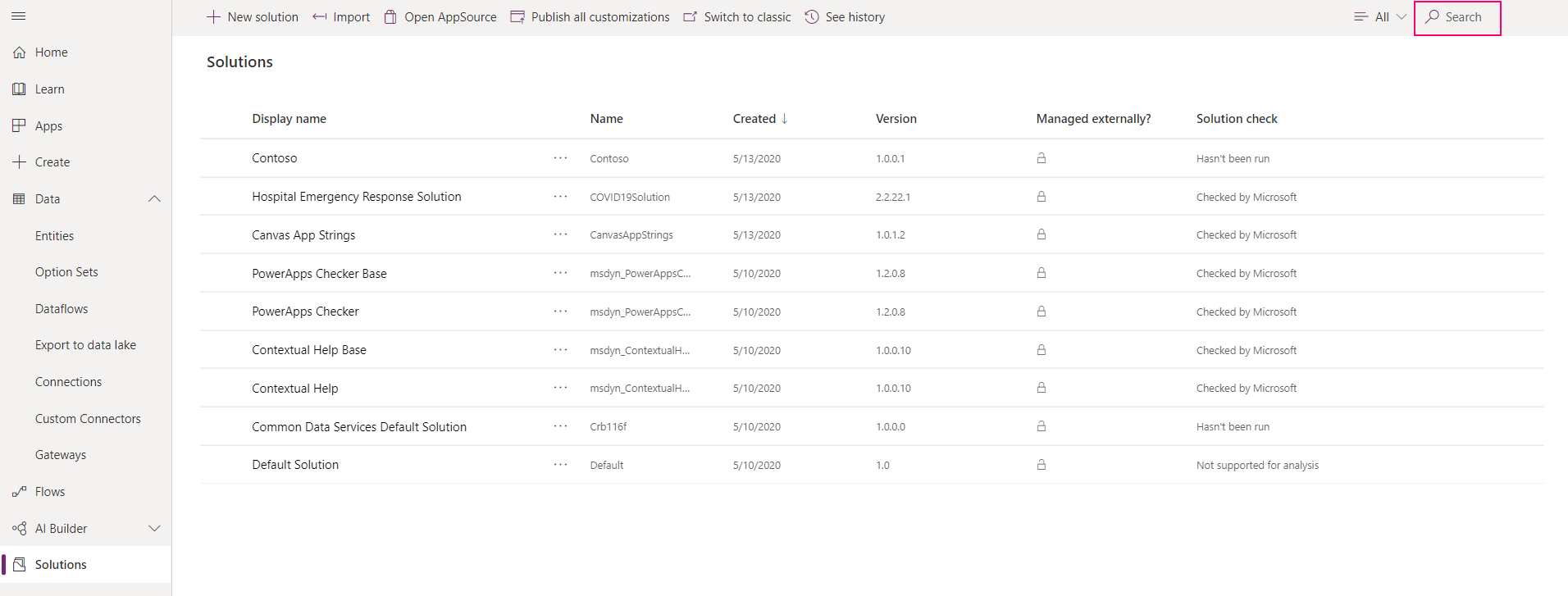
Or filter all items in the list by the component type.

Contextual commands
As you select each component, the actions available in the command bar changes depending on the type of the component you have selected and if the solution is the default or a managed one.

When you don't select any component, the command bar shows actions applied to the solution itself.
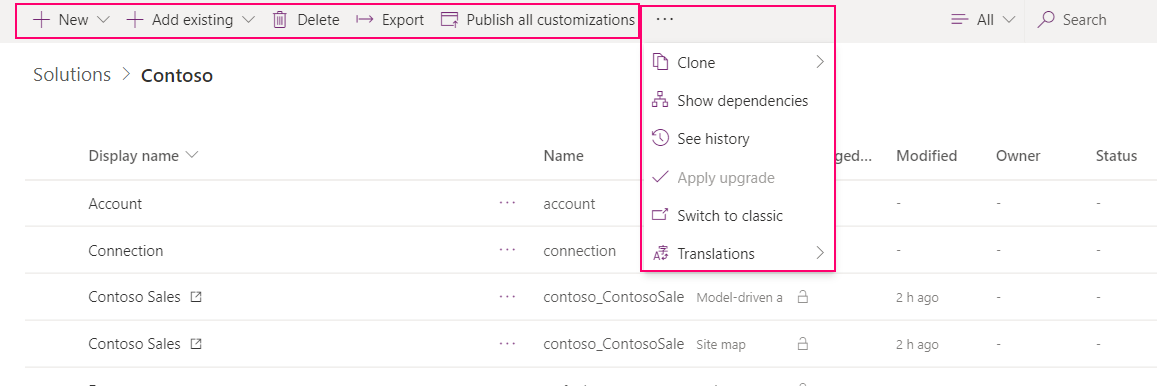
With solutions that are unmanaged or the default one, you can use the New or Add Existing command to create or add different types of components. More information: Add solution components
Note
You can't add components to a managed solution. When you try to, you’ll get the following message:
"You cannot directly edit the components within a managed solution. You’ll need to add it to another unmanaged solution that you’ve created to customize the component. The component might not be customizable."
Additional privileges required
Some components might require certain Dataverse privileges for users to run the component when the component is imported into the environment from a solution.
Flows
To use or run a flow from a canvas app that is included in a solution, you must have permissions to that flow through someone sharing ownership or run permissions. When an app in a solution is shared with a set of users, the flows must also be explicitly shared.
More information: Security roles and privileges
Use pipelines in Power Platform to deploy solutions
Easily deploy solutions to test and production environments using pipelines in Power Platform. Once pipelines are in place, makers can initiate in-product deployments with a few clicks. Makers do so directly within their development environments. More information: Overview of pipelines in Power Platform
Known limitations
The following limitations apply to the use of canvas apps, flows, and custom connectors in solutions.
- If you encounter a canvas app publishing error: the app has connections to flows that are no longer in the environment, remove any deleted flows from the app. Then save and publish the app.
- Canvas apps shared with Everyone that go through environment backup and environment restore operations aren't shared with Everyone in the restored environment. Notice that the canvas app can be shared with a security group, and the app in the restored environment is shared with that security group.
To learn more about customizing the individual components in a solution, go to the following articles:
- For table, table relationships, column and message customizations, go to Metadata.
- For table forms, go to Forms.
- For processes, go to Processes.
- For business rules, go to Business Rules.
Troubleshooting solutions
For known issues and information about how to troubleshoot working with solutions, go to Manage apps and solutions in the Power Apps Troubleshooting documentation.
